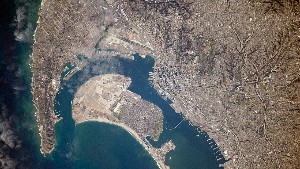 A technique to extrapolate poverty levels in rural settings using satellite data and imaging has proven to be very promising. This paves the way for a much more efficient and cost-effective approach to identifying and addressing poverty.
A technique to extrapolate poverty levels in rural settings using satellite data and imaging has proven to be very promising. This paves the way for a much more efficient and cost-effective approach to identifying and addressing poverty.
Estimating poverty is crucial for improving policymaking and advancing the sustainability of a society. Traditional poverty estimation methods such as household surveys and census data incur huge costs, however, creating a need for more efficient approaches.
With this in mind, the EU-funded USES project examined how satellite images could be used to estimate household-level poverty in rural regions of developing countries. “This promises to be a radically more cost-effective way of monitoring and evaluating the Sustainable Development Goals,” says Dr Gary Watmough, USES collaborator and Interdisciplinary Lecturer in Land Use and Socioecological Systems at the University of Edinburgh, United Kingdom.
To achieve its aims, the project investigated how land use and land cover information from satellite data could be linked with household survey data. “We looked particularly at how households use the landscape in the local area for agriculture and other purposes such as collecting firewood and using open areas for grazing cattle,” explains Dr Watmough.
The work also involved examining satellite images to determine which types of land use were related to household wealth or poverty using statistical analysis. “By trying to predict household poverty using the land use data we could see which land use variables were most related to the household wealth in the area,” adds Dr Watmough.
Overall, the USES project found that satellite data could predict poverty particularly the poorest households in the area. Dr Watmough comments: “This is quite remarkable given that we are trying to predict complicated household-level poverty from a simple land use map derived from high-resolution satellite data.”
A study conducted by USES in Kenya found that the most important remotely sensed variable was building size within the homestead. Buildings less than 140 m2 were mostly associated with poorer households, whereas those over 140 m2 tended to be wealthier. The amount of bare ground in agricultural fields and within the homestead region was also important. “We also found that poorer households were associated with a shorter number of agricultural growing days,” says Dr Watmough.
The satellite data could also help in the future by monitoring changes in environmental resources and ecosystem services that are important for well-being. “Although much work needs to be done before we have a monitoring and evaluation system, we can now say that there is huge potential for remote sensing in this field,” notes Dr Watmough. “Developments in satellite technology mean that we now get higher resolution data almost daily, with enormous potential for further development,” he highlights.
Combined with survey data, more frequent satellite data can increase understanding of human-natural systems that are key for sustainable development. Moreover, once future satellite information is used to detect particular changes in land use or related issues, it will allow NGOs or authorities to quickly investigate and adopt policies or resource allocation. “This is especially important for developing regions that strongly rely on natural and environmental resources,” says Dr Watmough. Undoubtedly, satellite data will represent an increasingly important tool in assessing rural poverty and advancing sustainability.

